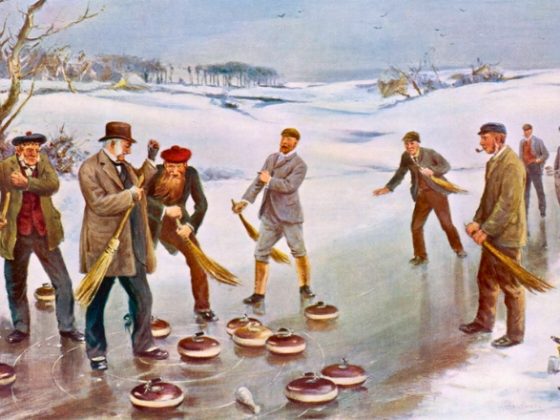The Influence of Scottish Roots in Canada!
Nearly 5 million Canadians boast Scottish ancestry, weaving a rich tapestry of tradition and influence that permeates every corner of Canadian life. This article highlights the deep-rooted connections between Scotland and Canada, spotlighting the seminal contributions of Scottish immigrants to Canadian society and the ongoing efforts to keep their culture thriving through events like National Tartan Day. From economic impacts to political reforms, from educational advancements to cultural festivals such as Tartan Week NYC, the Scottish Canadian identity is vibrantly alive. We also delve into the colorful history and significance of the tartan, celebrated annually on Tartan Day. Prepare to uncover the legacies of notable Canadian Scots, their profound impacts on the nation, and the vibrant celebrations that continue to ignite Scottish pride across Canada. For those curious about what is Tartan Day or the broader Tartan Day history, this journey through Scottish-Canadian heritage offers a treasure trove of insights.
History:
Canada’s cultural mosaic has been significantly shaped by the Scottish influence, especially from Ulster-Scots who began migrating in the 1760s. These early settlers, including Protestant Irish such as Anglicans and Ulster-Scottish Presbyterians, established strong communities in Upper Canada and Nova Scotia, led by figures like Alexander McNutt. Their migration continued westward in two major waves, influencing the cultural and religious landscape of Western Canada. The Benevolent Irish Society, founded in Newfoundland in 1806, and the Irish Benevolent Society of Ontario, established in 1877, played pivotal roles in promoting charity and cultural unity across religious lines, effectively reducing sectarian tensions. The integration of Catholic and Protestant school boards in Prince Edward Island and the diminishing of religious-based electoral practices further exemplified the decline of sectarianism in the 20th century. Meanwhile, the Orange Order’s support for Protestant Christianity and the British Monarch highlighted the intertwined nature of religion and politics in Canadian history. Together, these elements illustrate the indelible impact of Scottish culture on the development and evolution of Canadian society.
- Dynamic Synergies Across Vital Industries:
The historical interactions between Scotland and Canada have forged strong ties that are evident across various key sectors today. Scotland is a crucial partner for Canada in fields like engineering, food and drink, and especially renewable energy, where Scottish companies are at the forefront of projects like those in the Bay of Fundy, harnessing some of the world’s most potent tidal forces. Educational links are also robust, with many Canadian universities drawing on Scottish educational roots, offering popular Scottish studies and Gaelic language courses. The recent appointment of Dr. Lesley Brown as principal of Yukon University, Canada’s newest higher education institution, underscores this connection. Furthermore, Scottish universities have experienced a significant increase in Canadian student enrollment, growing by 15% in the 2021-22 academic year, with over 1,300 students. The Scotland-Canada Academic Partnership (S-CAP) aims to further enhance these educational bonds, building on successful initiatives like the Saltire Scholarship, which has supported 265 Canadian students since 2009. This dynamic relationship continues to influence and enrich both nations across multiple dimensions.
- Scottish Settlement of Canada
The Scottish impact on Canada is profound and deeply embedded, with a history that spans several centuries. This influence is vividly reflected in place names such as Mackenzie Bay and Calgary, the latter named after a Scottish beach. The Atlantic province of Nova Scotia, which means New Scotland in Latin, further underscores this rich Scottish heritage. Scots were among the earliest Europeans to traverse North America, leaving a lasting mark on Canada’s social, political, and economic frameworks—particularly noticeable in sectors like banking, labor unions, and politics. The earliest documented presence of Scots in what would become Canadian territory appears in the Saga of Eric the Red, which narrates a Viking expedition in 1010 AD to Vinland, believed today to be Newfoundland. This saga includes an account of Viking prince Thorfinn Karlsefni using two Scottish slaves to scout Vinland’s coast for a possible settlement, highlighting the long-standing Scottish presence in North American history. These sagas, initially preserved through oral tradition, were only penned down about 250 years later, securing the Scottish narrative within Canada’s historical mosaic. This storied past illustrates the integral role Scots have played in shaping Canada into the diverse and dynamic nation it is today.
Economic & Political Life
The profound contributions of Scots to Canada’s economic and political realms are a cornerstone of the nation’s historical narrative. Figures like James Glenie and John Neilson stood out for their critiques of political elitism, contrasting with contemporaries such as John Strachan who were entrenched within the ruling elite, influencing governance and policy. The impact of Scots in leadership is further evidenced by the fact that the first two Canadian prime ministers, Sir John A. Macdonald and Alexander Mackenzie, were of Scottish descent, underscoring the pivotal role Scots have played in political stewardship. In commerce, Scots dominated critical sectors including the fur trade, timber trade, banking, and railway management, notably shaping the nation’s economic landscape. Visionary Scottish businessmen like Simon McTavish and James McGill established the North West Company in 1779, challenging the Hudson’s Bay Company’s monopoly and setting the stage for intense business rivalries that were key in the economic structuring of Canada. Scots also led in the timber industry, with figures such as James MacLaren earning the moniker “lumber kings” in the Ottawa Valley. Their strategic contributions didn’t stop there; the founding of the Bank of Montreal in 1818 and the Canadian Pacific Railway in 1881 further showcase the integral role Scots played in laying the foundations of Canada’s infrastructure. By the 1880s, Scots represented nearly half of Canada’s industrial leadership, marking a legacy of innovation and influence that helped mold Canada into the dynamic and diverse country it is today.
Notable Figures of Scottish Descent in Canadian Society!
In the tapestry of Canadian cultural heritage, Scottish descendants have woven vibrant threads, prominently shaping the nation’s identity and societal evolution.
- Arthur Meighen:
Canada’s ninth Prime Minister, serving non-consecutive terms in 1920-1921 and 1926, hailed from Ontario with ancestral roots tracing back to Londonderry, Ireland. His leadership, marked by interruptions, reflects a politically turbulent time in Canadian history.
- The Hart Wrestling Family:
Founded by Stu Hart, this dynasty has left a substantial mark on professional wrestling both in Canada and internationally. Notable members include Bret and Owen Hart, who have become synonymous with the sport’s global appeal.
- Scottish Influence in Canadian Politics:
Four Canadian Prime Ministers, including figures like John A. Macdonald and John Diefenbaker, were members of the Orange Order, highlighting the historical Scottish impact on Canadian political frameworks and policies.
- Cultural & Political Contributions:
These figures exemplify the significant roles that individuals of Scottish descent have played in shaping Canada’s national identity, contributing to its political development and cultural enrichment on an international stage.
Education:
The Scottish legacy in Canadian education is profound, from the establishment of key universities like McGill and Dalhousie to the architectural and moral influence in cities like Montreal and Ontario. Scottish benefactors and thinkers have not only shaped the academic landscape but also embedded distinct cultural and ethical values such as Sabbath observance and temperance. This indelible impact has helped define the broader British cultural influence in Canada, leaving a lasting mark on its educational and societal norms.
Social & Cultural Life:
The Scottish imprint on Canada’s social and cultural fabric is unmistakable, marked by the founding of diverse institutions from Montreal’s Beaver Club to the Royal Montreal Golf Club, and pivotal healthcare establishments like the Montreal General Hospital. Social networks such as the St. Andrew’s Society further illustrate Scotland’s nurturing of community and heritage abroad. Militarily, Scots formed the distinguished Black Watch battalion, underscoring their integral role in Canadian defense. Scottish names permeate the landscape, with Calgary and the Mackenzie River highlighting their exploratory legacy. The cultural contributions of Scots extend into the arts, notably through literary giants Ralph Connor and John Kenneth Galbraith, and pioneering animator Norman McLaren. This deep-rooted Scottish presence has woven a rich tartan of tradition and innovation into the Canadian mosaic.
- Cultural Conservation
The cultural conservation of Scottish traditions in Canada serves as a vivid tapestry of history and identity. Since the mass migration in 1870, Scots have primarily settled in Ontario and Western Canada, weaving their rich cultural threads into the fabric of Canadian society. Despite the pressures of assimilation, Scottish Canadians tenaciously cling to their heritage, symbolized by enduring traditions such as clan affiliations, tartans, and the lively Highland games that commenced in 1819. These games have evolved into a cornerstone of Canadian culture, celebrated with traditional sports, dance, and music. Societies like the St. Andrew’s in Montréal bolster this connection, organizing events that include annual balls and Whisky-Fête, enriching Canadian-Scottish relations and studies at institutions like McGill University. The observance of Robbie Burns Day every January 25th further underscores this cultural fidelity, with festivities that feature iconic bagpipes, kilts, and haggis. In Nova Scotia, efforts to preserve Scottish Gaelic are robust, highlighted by a dedicated high school curriculum and bilingual signage, nurturing a linguistic legacy that still thrives among communities. This distinct cultural and migratory saga of the Scots in Canada not only underscores their ability to integrate but also to maintain a unique cultural identity, creating a lasting impact on the multicultural landscape of Canada.
- Large-scale Migration
The substantial influx of Scottish immigrants to Canada between the 1760s and 1860s has left an indelible mark on the nation’s demographic and cultural landscape. Originating primarily from the Highlands, these early settlers were largely unskilled farmers facing severe economic adversities, including the notorious Highland and Lowland Clearances. Their arrival on ships like the Hector in 1773 and subsequent settlements, notably the 800 colonists brought by Lord Selkirk to Prince Edward Island in 1803, catalyzed the widespread dissemination of Scottish culture across Canada. By the 2000s, Scots constituted 29.3% of Nova Scotia’s population, infusing the region with Gaelic linguistic and cultural traditions. Scottish influence pervades various Canadian regions such as Quebec, Ontario’s Glengarry County, and British Columbia, evidenced by local place names and vibrant cultural celebrations like Tartan Day and Highland Games. This enduring Scottish presence underscores a rich heritage that continues to thrive, shaping Canada’s societal and cultural contours through continuous waves of migration.
New Scotland (Nova Scotia) :
Nova Scotia, originally christened “New Scotland,” is steeped in a rich cultural and historical kinship with Scotland. This connection dates back to 1622 when Sir William Alexander received a charter from King James VI of Scotland to establish a Scottish colony in what is now Canada. Despite the harsh realities of the new land, which limited early Scottish settlement before 1759, the failed Jacobite uprisings of 1715 and 1745 spurred waves of Highland Scots to seek asylum in Canada, driven by the search for political and religious freedom. These immigrants predominantly settled along Canada’s Atlantic coast, embedding their resilient culture and traditions into the fabric of Nova Scotia, and shaping a unique Scottish-Canadian heritage that resonates to this day.
Why do Canadians of Scottish ancestry refer to themselves as being “Scotch”?
The term “Scotch” as used by Canadians of Scottish descent is rooted in a rich tapestry of historical and social contexts that trace back to the old vernacular of Scotland and its usage in early Canadian settlements. Initially, “Scotch” was a commonplace term in Scotland and among diasporas to denote anything of Scottish origin. Over time, while the term has largely been replaced by “Scottish” to describe people, in certain Canadian communities, “Scotch” endures as a traditional and affectionate nod to their ancestral identities. This enduring usage reflects a deep-seated reverence for heritage and a personal connection to a storied past, highlighting the unique evolution of Scottish terminology and identity within Canadian culture.
"Frequently Asked Question's"
Many Scots migrated to Canada during the 18th and 19th centuries due to economic opportunities and land availability. The Scottish influence is evident in Canadian culture, particularly in places like Nova Scotia, which translates to “New Scotland.”
Scots were drawn to Canada for several reasons including economic hardship at home, the promise of land grants, and opportunities in the fur trade and other emerging industries. These migrations were particularly pronounced during the Highland Clearances and the Industrial Revolution.
According to the Canadian Census, approximately 4.8 million Canadians claim Scottish descent, making it one of the most common ancestries in the country.
Scottish names are prevalent throughout Canada, not only in personal names but also in place names. Examples include Nova Scotia, Calgary (from the Scottish beach Calgary Bay), and Hamilton (named after a city in Scotland).
Cape Breton, in Nova Scotia, has a strong Scottish heritage. The island has been a significant center for Scottish Gaelic culture and language, although it also has communities of Irish descent.









